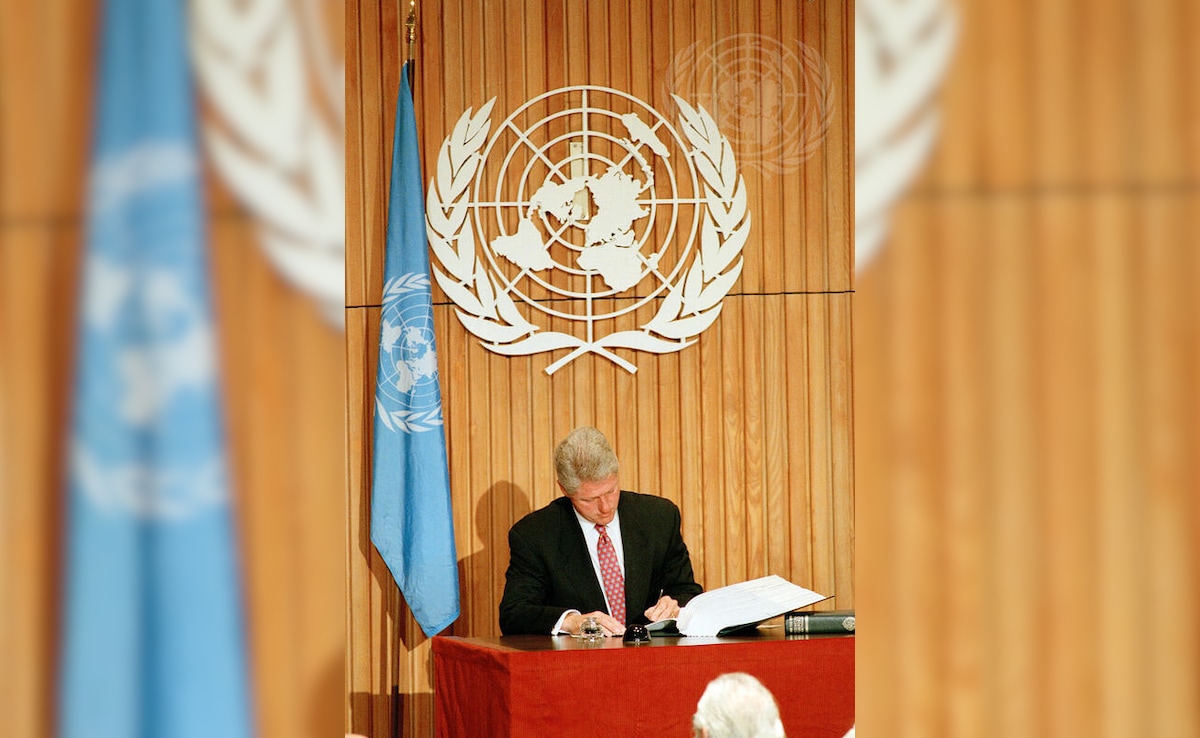- President Donald Trump announced the US will resume nuclear explosive testing, ending decades of restraint
- The last US nuclear explosive test was conducted in 1992 at the Nevada Test Site
- The US signed the 1996 CTBT banning all nuclear test explosions but continued subcritical tests
President Donald Trump's surprise announcement that the United States will "start testing our Nuclear Weapons," has upended more than three decades of restraint in nuclear policy. The declaration has sparked fears and confusion in the country and has raised concern across the globe.
The US, which last conducted an explosive nuclear test in 1992, has since relied on subcritical experiments to maintain its arsenal. The country has a long and complex history of nuclear experimentation. Here's a look at it:
1945: The United States conducted the world's first nuclear test explosion in Alamogordo, New Mexico. Inspired by the poetry of John Donne, J Robert Oppenheimer code-named the test "Trinity."

1946: The first underwater nuclear test, Operation Crossroads, was conducted by the United States in 1946 at its Pacific Proving Grounds in the Marshall Islands with the purpose of evaluating the effects of nuclear weapons used against naval vessels.
1950: On December 18, 1950, President Harry Truman authorised the establishment of a 680 square mile portion of the Range as the Nevada Proving Ground. The Nevada Test Site was one of the most significant nuclear weapons test sites in the US.
1951: On January 27, 1951, the first atmospheric nuclear test was detonated at the Nevada Testing Site, code-named "Able." A total of 100 atmospheric tests were conducted at the Nevada Testing Site until July 1962.
1952: The first fusion bomb was tested by the United States in Operation Ivy on November 1, 1952, on Elugelab Island in the Enewatak Atoll of the Marshall Islands. The device was strictly an experimental, prototype design and not a deliverable weapon.
1954: On 1 March, 1954, the US detonated a thermonuclear weapon, code-named "Shrimp," on Bikini Atoll in the Marshall Islands in what turned out to be the largest nuclear test in the country's history.

1957: Operation Plumbbob was a series of 29 nuclear tests conducted by the US military between May 28 and October 7, 1957, at the Nevada Test Site. It was one of the longest and most comprehensive test series in the US.
1958: On October 31, 1958, the US entered into a unilateral testing moratorium announced by President Dwight D Eisenhower with the understanding that the Soviet Union also would refrain from conducting tests. The Soviet Union resumed testing in September 1961.
1961: On September 15, 1961, the US resumed testing at the Nevada Test Site on a year-round basis and conducted an average of approximately 27 tests per year over the next three decades.
1963: The Limited Test Ban Treaty was signed by the United States, Great Britain, and the Soviet Union on August 5, 1963. After Senate approval, the treaty that went into effect on October 10, 1963, banned nuclear weapons testing in the atmosphere, in outer space, and under water.
1974: The Treaty on the Limitation of Underground Nuclear Weapon Tests, also known as the Threshold Test Ban Treaty (TTBT), was signed in July 1974. It established a nuclear "threshold," by prohibiting tests having a yield exceeding 150 kilotons.
1992: The US conducted 1,032 nuclear tests between 1945 to 1992. The last US nuclear explosive test, code-named "Divider," was conducted on September 23, 1992, underground at the Nevada Test Site.
1992: Congress passed and President George HW Bush signed into law the Hatfield-Exon-Mitchell Amendment establishing a temporary unilateral moratorium on underground nuclear testing. It stated that "no underground test of nuclear weapons may be conducted by the US after September 30, 1996, unless a foreign state conducts a nuclear test after this date, at which time the prohibition on US nuclear testing is lifted."
1996: President William J Clinton signed the Comprehensive Nuclear-Test-Ban Treaty (CTBT) at UN Headquarters on September 24, 1996. The US was the first country to sign CTBT, which bans all nuclear test explosions, whether for military or civilian purposes.

1997-Present: The United States continues to conduct non-explosive subcritical experiments at the Nevada National Security Site to assess the safety and reliability of its nuclear stockpile. In May 2024, the Department of Energy's National Nuclear Security Administration (NNSA) carried out one such experiment at the Principal Underground Laboratory for Subcritical Experimentation (PULSE) facility. The DOE said the test, like the 33 previous US subcritical experiments, complied with the zero-yield standard under the CTBT.
Track Latest News Live on NDTV.com and get news updates from India and around the world

